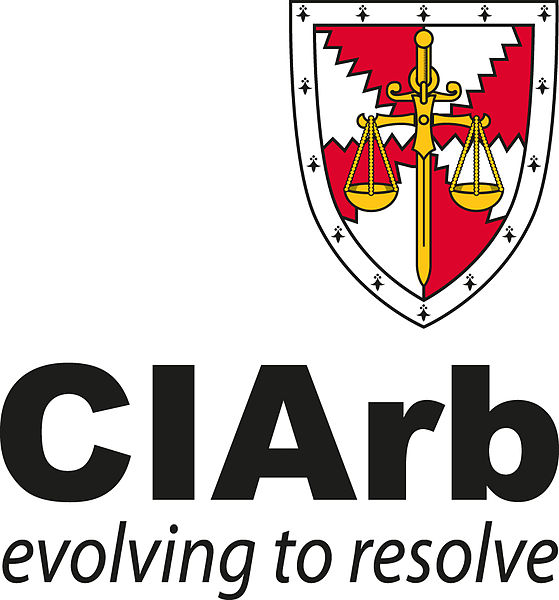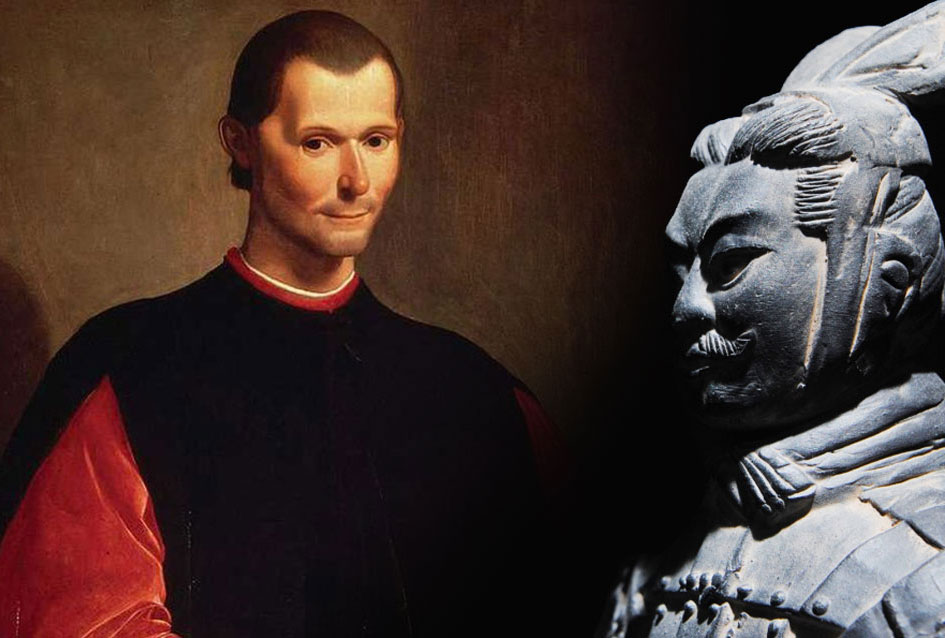He emerges from the fog enveloping the early dawn. Begrimed from battle, every muscle and sinew straining as he advances, his gaze is fixed and determined, but oddly vacant. His weapons are displayed, deliberately seeking to intimidate by his preparation and the size of his arsenal. Often he is alone; on occasion he is accompanied by a coterie carefully selected for psychological effect. In the ensuing conflagration, more ammunition will be expended than necessary, but the magnificent display will leave an indelible impression. Everything in his wake will be destroyed, but his honor will be intact, and he (usually) survives. As he fades back into the jungle, we are left in awe of his power. But we wonder . . . who won the battle? And what of the greater war? From whence will the combatants renew their stores for the continuing carnage looming on the horizon?
A scene from your favorite action movie? Visions from your last trial or mediation? Perhaps a recent nightmare? Or maybe all three.
Conventional wisdom gives the advantage to the litigator who pursues objectives aggressively. We have been trained to honor such efforts and approach every task with such a singular resolve. Our earliest memories are those of competition. From youth sports to the selection of the Student of the Month, we are rewarded for being the smartest, strongest, most agile, even the most cunning. Throughout law school we learn the value of “winning.” Law and the rules by which we ply our trade are created by legislation, administrative processes or by victory in litigation. Rarely, even today, are we taught the value of negotiation or methods of conflict resolution other than adjudication. Negotiation and mediation are termed “alternative dispute resolution” (ADR), as if litigation is the natural means by which conflict should be, and is, preferably resolved.
With this deeply embedded code and the competitive pressures to perform for clients, it is hardly surprising that many litigators enter the mediation process intent upon “winning” by intimidation, assertion of their power, or aggressive negotiation. However, there is a significant distinction between what can be accomplished at trial and what can be achieved through cooperative negotiation, even of the most hostile disputes, in a facilitative process. Those who approach mediation with a conventional notion of “winning” do a disservice to their clients and are at a significant disadvantage, both in negotiating the outcome of a specific dispute and in maintaining a healthy long-term relationship with their client.
Superior results can be achieved at mediation by recognizing the distinction between mediation and adjudicatory processes. By focusing on a client’s interests as well as recognizing situations in which those interests can better be satisfied by a negotiated resolution than by the limited options available at trial or arbitration, attorneys and clients may be liberated from the constraints of the adjudicatory process, which rewards continuing conflict and advocacy more than contemporary problem solving. To demonstrate the power of such an approach, the principles suggested in this article will be applied to entertainment and intellectual property disputes to demonstrate their broader applicability.
Know where you want to go.
“If you don’t know where you’re going, you’ll probably not wind up there.”
— Forrest Gump
Different results are attainable at mediation from those available at trial or in arbitration. By definition, litigation can only resolve disputes as they are narrowly defined by the pleadings. Through the mediation process, parties have the chance to deal with issues more broadly and more subtly. Therefore, there are greater opportunities for gain for all participants through a negotiated resolution. The advantage in mediation goes to attorneys who know where they want to go, and assess the players, the landscape and everyone’s options.
It is true that the objective of litigation is victory. The client presented a problem, counsel evaluated the issues, and crafted a pleading through which one party or the other will succeed in obtaining a verdict or order consistent with the remedies permitted by law. A trademark will or will not be enforceable; it will or will not be found to have been infringed by a competing mark or product. Actual or statutory damages, attorneys’ fees and penalties will or will not be provable or recoverable. This is the hallmark of a conflict determined by the rights and power of the parties – there will be winners and losers. Aside from the mediator’s oft-repeated refrain that perhaps no one will “win” due to the ambiguities of the situation and expense of litigation in terms of costs, potential recovery and distraction from business, a trier of fact will inevitably be obligated to make a determination. If the stakes are high enough and the parties sufficiently recalcitrant that no informal resolution is achieved, combat will occur and a victor will be declared (subject to the exigencies of appeal and the market conditions years after the decision was made to start the fight).
In contrast, the goal of the mediation process is to satisfy a client’s interests as they have evolved at the time of the negotiation and to overcome any impediments to settlement. The attorney who comes to this process to “win” in the conventional adversarial sense is at a serious intellectual and tactical disadvantage. Attorneys have the best chance to satisfy their clients’ interests at a mediation if they are prepared to solve the problems of all parties to the dispute. There is wisdom in the adage: Do not negotiate like a litigator, negotiate like a problem solver.
While litigators are trained to participate in an adversarial system in which their clients expect representation by gladiators, successful negotiators view disputes as shared problems and focus on every party’s interests and needs, not merely the rights and power of their own clients. Such an approach permits the contestants to shape their own destinies by looking beyond the conventional limited remedies permitted by the pleadings and seek solutions which satisfy the present needs of the parties, less restrained by the legal formalities to which they may ultimately be left if unsuccessful in finding a resolution.
Think outside the box
“The human mind is like a parachute – it functions better when it is open.”
— Cole’s Rules
What are “interests” and how do you discern and understand them? Interests are not the elements of a settlement or litigation outcome which a client professes to desire – these are merely their positions. Interests are the client’s ultimate goals and motivations; they are the answer to the question “why do you want that?” when you hear a position.
There are three fundamental truths about interests. First, a client may not understand their true interests at any given point in time. They will often believe their positions are their interests. It is natural to have a visceral desire for exclusivity, for example, with regard to an entire market for a product. When you probe with the client to understand why that is important, you and the client begin to learn more about their real underlying interests.
Second, a client’s interests will change through the course of litigation. Both market conditions and knowledge of the facts and law will impact the client’s evolving view of its interests.
Third, as the client’s interests change, and become less attainable through the remedies afforded by litigation, that situation will somehow become the fault of the litigator, whose bills have grown as they accumulate on the client’s stress pile.
Albert Einstein wrote that “[t]he significant problems we face cannot be solved by the same level of thinking that created them.” To overcome the problems noted above, begin by seeking to understand the clients’ interests from the initial interview. Continue the process as discovery progresses. Be vigilant in questioning the client’s interests as mediation approaches. This is not, as some attorneys presume, incompatible with zealous advocacy and standing with the client as you walk through the wall of fire. Making certain that the client understands and remains focused on their true objectives is crucial both to achieving those objectives and understanding how counsel is advancing those interests by the conduct of the litigation.
How do you uncover a client’s interests? Begin by using open-ended questions (e.g., Why? Why is that important to you? Why is that more important to you than X?). Follow up with more probing questions. Re-frame what you hear from your client to help separate “positions” (what they want) from “interests” (why they want it; their genuine goals and motivations).
Brainstorm regarding interests and inventive solutions before a mediation session. No idea is too absurd to explore. Be non-judgmental during brainstorming sessions; get ideas on the table before evaluating or discussing the merits of an idea. Think critically about a client’s interests. Be non-traditional – consider ways to identify and accommodate your opponent’s interests.
Who should be involved in the brainstorming process? Think about expanding the litigation or legal team for purposes of the mediation. Is a fresh perspective required? Which non-litigators might bring a fresh perspective to the analysis? Should outside “settlement counsel” be employed? Who should be involved from the client’s team? Diversification of the client’s team involves evaluation of substantive needs, political and ethical issues, and sometimes difficult questions about whether “the problem” who or which created the dispute is sitting across the desk from you.
Why it works
“We are continually faced with a series of great opportunities brilliantly disguised as insoluble problems.”
— John W. Gardner
Applying these principles to entertainment and intellectual property disputes provides a useful analytical tool in judging their effectiveness. Posit a conflict over the rights to a trademark which raises cutting-edge issues as to the application of trademark law, or perhaps the confluence of trademark and copyright law. One side proposes to publish a book or display a film or television program which the other claims to infringe upon its intellectual property rights. Failing an early resolution, such a dispute will result in the filing of a federal court action seeking an adjudication of the rights of the parties.
What are the stakes? For every client they are monumental. Sometimes, they are truly of the ‘bet the company’ variety. In others, they are more personal. Naturally, the specific project involved in the action is subject to resolution, implicating financial issues and artistic concerns. In addition, the dispute will generally involve the continuing vitality of the intellectual property which is allegedly the subject of infringement. If the defendant succeeds in the pending action, the mark or copyright protection may be vitiated, opening the door to other threats. A classic litigated solution would yield a winner and loser, large legal and expert witness expenses and a fractious relationship among the parties.
Entertainment and intellectual property disputes present a classic context in which to view the balancing of client interests. Often, clients have financial and other interests in ongoing relationships with each other or third parties with whom they share relationships. Such disputes are also characterized by shifting interests in which clients often begin the litigation with expectations predicated upon their myopic perspective of the facts and law. After discovery and expensive motions to dismiss for ancillary or provisional relief and/or for summary judgment or adjudication, the complexion and potential of the dispute have often changed. Forcing the client to confront its present goals and objectives in the contemporary context of the litigation creates the potential for a meaningful business meeting if the parties focus on problem solving, rather than an adversarial victory. Indeed, if the mediation occurs late in the litigation process, the parties are often looking for an escape which accommodates their interests and avoids imminent risk.
Understanding the potential for an adverse legal outcome, the parties often realize that their interests could be accommodated by something less than vindication through trial. To the extent to which the defendant is focused on a single or limited undertaking, plaintiff might determine that it would rather grant a favorable license for such uses or otherwise “share” its rights than risk abrogation of its valuable franchise. The defendant has thus achieved its objective of mounting its production or distribution, potentially acknowledged in an appropriate and acceptable manner the rights which are in dispute, and everyone achieves their objective – in essence, everyone moves forward, while the rights stand still.
What interests of the parties are thus served? An inexpensive and expeditious resolution (especially if the mediation occurs early); avoidance of the risk of an adverse determination; averting the possibility of “making bad law”; business relationships may be created or maintained; negotiation and disclosure of business information in a confidential environment; and the ability to structure a detailed transaction.
None of these interests could be accomplished by a fully litigated resolution. Yet such a resolution satisfies the interests of all participants. The attorneys serve the interests of their clients and demonstrate their mastery of the client’s business needs and of a process designed to accomplish that objective. The result is a satisfied client more likely to seek a repeat performance. This is not to suggest that such a result is always achievable without first enduring enough of the pain of the litigation process that the clients are prepared for a practical business solution. However, comporting oneself in the mediation without a focus on the mutual best interests of all participants is destined to force a litigated roll of the dice, unless the rights and power chips are stacked so high on one side that capitulation is assured in the negotiation.
Principle in action
“Courage is what it takes to stand up and speak; courage is also what it takes to sit down and listen.”
— Sir Winston Churchill
Respect, attentiveness and flexibility are the hallmarks of an effective mediation process. No one need accept what they hear from the other side as true, but actively listening to understand the interests which must be accommodated is vital to your client’s success.
For the mediation process to be effective in focusing on interests, counsel should avail themselves of several important opportunities. In the pre-session exchange of information, the parties should make their interests clear, if not to the opposing party, at least to the mediator. The parties should also take advantage of a joint session. Increasingly, parties and counsel are reluctant to sit and reason together. It is almost always a mistake to miss this opportunity, if proper groundwork is laid for a well-conducted session. A joint session provides a rare opportunity to speak directly to the opposing party. The discussion in this session can set the tone for the mediation. Make a presentation of the relevant facts and reveal those interests which are important to a resolution. Discuss the facts in a manner which is informative, but not confrontational. Seek clarity as to an opponent’s interests. The emotional content in the joint session is important; it is an opportunity to convey feelings. Do not fear emotions. Consider the power of empathy and concern.
Make your interests clear. Listen actively and attentively. Be candid. If the opposition refuses to cooperate, or distributive bargaining is necessary for issues remaining in the mediation, experience teaches that the best results come when the parties begin cooperatively, retaliate if the other party becomes competitive, and forgive, if the other party resumes a cooperative posture. But at all times, be clear – let the other party know what approach you are pursuing.
The power of this process is enhanced if the mediator assists each party with these principles: (1) Be open to learning about the other side’s interests; (2) Shift the emphasis away from legal positions; (3) Early in the mediation, jointly create agendas of the issues to be resolved; (4) Search for non-monetary and creative solutions to the dispute; (5) Generate multiple options for the mutual gain of the parties; (6) Use principled justifications and reasoned explanations for positions taken; (7) Attempt to base decisions on objective criteria; (8) Look for opportunities to expand value; and (9) Select options based on interests and objective standards.
Conclusion
“Never ascribe to an opponent motives meaner than your own.”
— James M. Barrie
Litigation, by necessity, brings out our most combative and least cooperative instincts. While the threat of further litigation may be important to enhance one’s bargaining position, it rarely affords a client the flexible solutions attainable through negotiation with a skilled facilitator.
Certainly, we have all seen him emerge from the fog in the early dawn. But more and more frequently, the Rambo litigator is disappearing from the mediation room and is being replaced by his counterpart, whose focus on satisfying his client’s objectives brings home the ultimate “win.”
Greg Derin mediates business, employment, entertainment and intellectual property matters. He helps teach Harvard Law School’s Program on Negotiation Mediation Workshop.
This article originally appeared in the Volume 35, Number 10, October 2008 issue of the Advocate. Copyright © 2008 Consumer Attorneys Association of Los Angeles. All rights reserved. Reprinted with permission.











